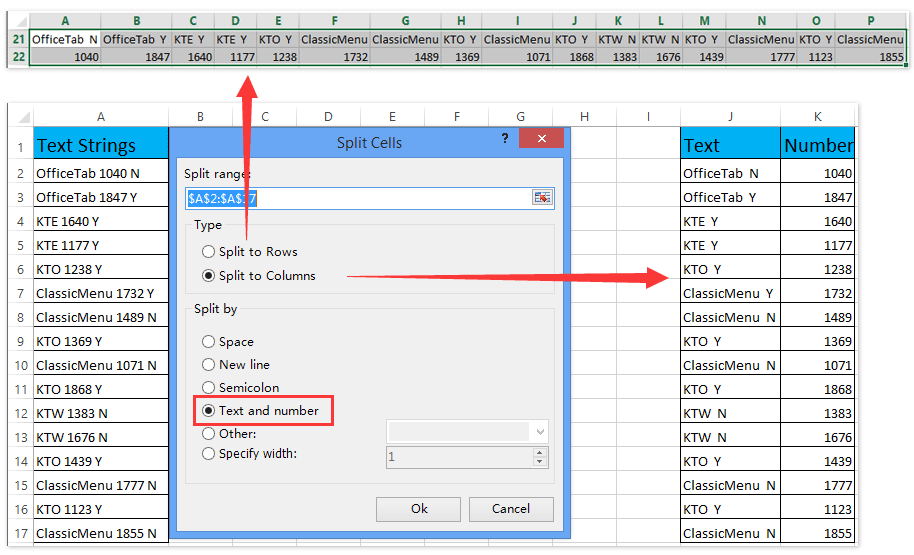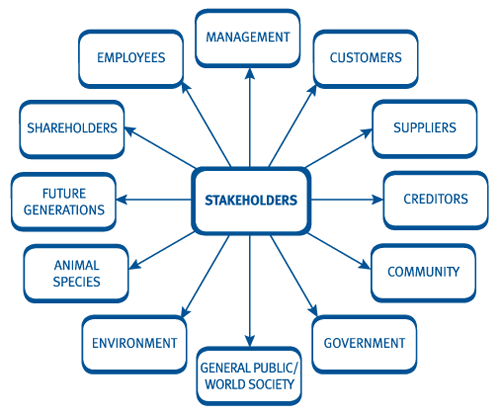This command reveals network ports in use and their incoming connections. However, netstat doesn't come out-of-the-box on Linux. If you have to install it, you can find it in the net-tools package. As a developer who experiments locally or pushes an software to a host, you may obtain an error that a port is already allocated or an address is already in use. Using netstatwith protocol, process and port choices demonstrates that Apache HTTP server already makes use of port 80 on the below host. Help choices for the current state of gadget cache help. The assist output lists the default read-mode gadget cache file path that is in effect for the present invocation of lsof. Lsof has three options which will cause security issues. First, its default compilation mode permits anybody to list all open recordsdata with it. Second, by default it creates a user-readable and user-writable system cache file within the residence directory of the true consumer ID that executes lsof. When HASSECURITY is defined, lsof will permit only the foundation person to list all open files. The non-root user might list only open recordsdata of processes with the same consumer IDentification quantity as the true user ID variety of the lsof process . When HASSECURITY is not defined, anybody may list all open information. When HASSECURITY is outlined,lsof will permit solely the foundation consumer to list all open information.
However, all recordsdata which are inside /etc/xinetd.d/ listing will overwrite the worldwide configuration file /etc/xinetd.conf. Option output lists the read-only and write gadget cache file paths, the names of any applicable surroundings variables, and the private gadget cache path format. The netstat command shows the services listening to ports on a Linux server and the small print of any connections currently made to them. The connection details to think about throughout primary community daemon troubleshooting are the addresses that the daemon is listening on , the daemon's course of identifier , and the program name. Lsof may be blocked by some kernel features that it uses - ,readlink, and stat. When lsof does handle to interrupt a block, it'll report the break with an error message. The messages could also be suppressed with the -t and -w choices. Lsof can be blocked by some kernel functions that it makes use of - lstat,readlink, and stat. Creation and use of a user-readable and user-writable device cache file is managed by the compile-time HASDCACHE possibility. See the DEVICE CACHE FILE section and the sections that comply with it for details on how its path is formed. When HASDCACHE just isn't outlined, lsof doesn't write or attempt to learn a device cache file.
See the DEVICE CACHE FILEsection and the sections that comply with it for details on how its path is formed. Lastly, the listening ports table will show you all the present operating processes with listening network sockets and ports. It can still be helpful to a minimal of show what, if any what ports are open on the system. Which could be tied again to netflow events on the network in case you have monitoring there. Which can be a higher strategy to monitoring community occasions rather than taxing each host. When out there, the r operate tells lsof to learn the device cache file, but not update it. When a path argument accompanies -Dr, it names the system cache file path. The r operate is at all times available when it is specified with no path name argument. If lsof isn't operating setuid-root and surrenders its setgid permission, a path name argument may accompany the r perform. When the expected pattern is observed, the rootkit activates backdoor entry. In this way, such rootkits make it tough to differentiate between unauthorized backdoor activities from respectable connections to a service on the compromised pc. The commonest sort of socket applications are client-server applications, where one facet acts as the server and waits for connections from clients. This is the type of software that you'll be creating on this tutorial. More specifically, you'll concentrate on the socket API for Internet sockets, typically referred to as Berkeley or BSD sockets. There are also Unix domain sockets, which might only be used to communicate between processes on the identical host. Run netstat as root to get the ID of the method listening on the desired socket. Two direct commands, netstat & awk, and one forked call to kill. This does kill the specific port instead of any port that starts with 50.
The ss command is another priceless tool for displaying socket data. The following command shows all TCP and UDP connections listening ports as a numeric value. Netcat, which may be known as nc, is a command-line tool. It makes use of the TCP or UDP protocols to learn and write information via network connections. It can be a uncooked TCP and UDP port author that may also search for ports. LSOF is an excellent utility for managing and tracking network connections in your Linux system. Although a selection of utilities can perform similar capabilities, none is sort of as robust as LSOF. With LSOF, you can list open ports, establish connections presently being made to your system, and determine what assets a course of is utilizing. Not solely that, but you could also determine what processes a specific user has and find detailed details about file and listing utilization. This was nice, I might now do some network recon and had some go to scripts for the subsequent time this occurs. You also can parse varied other information in /proc/net similar to /unix,/arp,/route to get unix sockets, the arp desk and the route table respectively. The route table needs the identical hex to dotted notation translation as the /tcp and /udp information. It also got me thinking, may we do that for all of the frequent hacker instructions , that we run when first compromising a box? The thinking being that monitoring may be setup for cases of id, netstat, ifconfig and so forth being run. If we run a kind of, we might be alerting our target that they've simply been popped. Normally, when a service is installed on a system, it opens a port and listens for incoming connections or requests. Those incoming connections or requests want one thing from that service. Since we all know services are extremely dumb, we have to guarantee they are properly configured.
For instance, if an attacker requests one thing, let's say to login to SSH, an administrator must configure SSH service to forestall any connections from remote hosts besides the ones that we personal. In that way, no attacker might login to a server with SSH as a result of his IP is blacklisted. Since ports are open doors for good and unhealthy guys, we must guarantee good guys are allowed only and stop unhealthy guys from messing around the system. If you want to filter out TCP , UDP or UNIX socket particulars, use "-t" "-u" and "-x" flag with the "ss" command. It will show all the established connections to the precise ports. If you wish to list both connected and listening ports utilizing "a" with the precise flag as proven under. You usually discover SELinux enforced on an utility host managed by an enterprise. SELinux offers least-privilege entry to processes operating on the host, stopping potentially malicious processes from accessing essential information on the system. In some conditions, an application needs to access a particular file but could throw an error. To verify if SELinux blocks the application, use tail and grep to search for a "denied" message within the /var/log/audit logging. Otherwise, you can examine to see if the box has SELinux enabled by utilizing sestatus. Lsof won't ever write to the system-wide gadget cache file path by default. It should be explicitly named with a -D operate in a root-owned procedure. Once the file has been written, the procedure must change its permission modes to 0644 (owner-read and owner-write, group-read, and other-read). When obtainable, the u perform tells lsof to aim to learn and use the system cache file. Generally lsof can only report on locks held by local processes on native information. When an area process units a lock on a remotely mounted (e.g., NFS) file, the distant server host usually information the lock state. One exception is Solaris - at some patch levels of two.3, and in all variations above 2.4, the Solaris kernel data data on remote locks in native structures.
This is the most generally used method to find which service is listening on which port. Netstat is a command line utility used to print community connections, routing tables, interface statistics, masquerade connections, and multicast memberships. This guide explains a few alternative ways to find which service is listening on a specific port in Linux. Most of you understand the default port of well-liked services or processes. For instance, the default port of Apache is 80, FTP default port is 21 and SSH default port is 22. You can discover the port names and numbers in Linux as described on this information. The default port numbers can also be modified to any customized ports to secure a Linux server. For occasion, the next guides describes tips on how to change the defaults port of Apache, FTP and SSH to totally different port. The -F change offers an excellent way to format LSOF output. This built-in feature allows you to pipe data immediately into external programs, corresponding to a Perl script, a C program, or perhaps a monitoring program like MRTG. You do this by specifying which fields you need to printed. For instance, lsof -F pcfn would print the process ID, the command name, the file descriptor, and the filename. Many choices can be found, and this will prevent time in working with the raw knowledge yourself. In this example, Apache is maintaining observe of two sets of log files, an access and an error log for two domains. As you can see, there are some variations between regular information and Internet connections. For one factor, the TYPE is now REG, indicating a regular file. Also, a SIZE variable is present, which signifies the precise size in bits the file takes up. Notice too that the DEV variable signifies all of them use the same system, in this example, a single hard drive.
The +d flag that was issued with LSOF tells the command not to go away the top-level directory, while +D would carry out a recursive check on all subdirectories. In this case, should you view /proc/net/tcp you might be able to get details about the present community connections . The file /proc/net/udp offers you details about UDP connections, and /proc/net/unix about unix sockets. This is probably old news to Linux regulars/grey-beards, but for someone who has all the time relied on netstat or lsof it was an excellent discovery. Its not based on ip port its primarily based on 5 fields, source ip supply port dst ip , dest port and protocol. All 5 mare matched to direct the packet to the correct process. If ther eis no match for the supply ip and supply port in the os table it's going to join it with the listen socket and that will trigger a new connection to be established. This is straightforward networking one hundred and one and is nothing to do with oracle particularly. A file set begins with a field whose identifier is `f' . It is adopted by lines that describe the file's entry mode, lock state, type, device, dimension, offset, inode, protocol, name and stream module names. It extends to the start of the next file or process set, whichever comes first. So, you must use netstat to troubleshoot and to measure the performance of your network. While primary, it's a helpful and essential too for locating faults in network providers. It clearly tells you which ones ports are open, and the place a program or service is listening on a selected port. We will now offer you some examples on how to make use of netstat. Most Linux distributions will embrace netstat by default, in their installations. It's a really capable tool which might show all of the TCP/IDP network connections which are active – each for incoming connections, and outgoing connections. It additionally shows routing tables plus the variety of the network interface alongside comprehensive statistics for network protocols. Unless you're appearing as an X server to distant Xwindows purchasers, X does not must be listening on a port.
You can forward X connections over ssh if you want to -- it is much safer. It does not matter if I socat, telnet or use a Soapy shopper, it's not accepting connections on the IPv4 handle unless I pass an argument to --bind when starting the server. When it is listening on IPv4, it reveals the client's IPv4 handle "normally" quite than as a pseudo IPv6 tackle. The -D possibility offers limited means for specifying the gadget cache file path. Function will report the read-only and write gadget cache file paths that lsof will use. A file set begins with a field whose identifier is 'f' . This combination of netstat and grep reveals open ports, which are ports that are listening for a message. The pipe character | sends the output of 1 command to a different command. Here, the output of netstat pipes to grep, letting you search it for the keyword "listen" and find the results. A large amount of text will begin scrolling on your screen. If you don't use any of the out there flags , netstat reviews the active network connections on your Mac. Considering the variety of functions a contemporary community device performs, you'll be able to expect the list to be prolonged. Network tab gives you details about the companies and processes on your system that are waiting to service network requests. These companies are listening on both a TCP or a User Datagram Protocol port. This section reveals course of name, process ID, listening address, port, protocol, and firewall status. You'll discover the completely different FDs, or file descriptors, right away. These all allow you to decide whether or not something physically exists on the system, is being used by the process, or is being held in memory. After operating make, the executable lsof ought to seem in the listing. There is not any default make set up rule, so you probably can create your own or simply copy lsof to your listing of choice. Keep in thoughts that you would be need to modify its permissions to be setuid-root if you'll like common customers to have the ability to see all open files.
RabbitMQ nodes bind to ports in order to accept consumer and CLI tool connections. Other processes and tools similar to SELinux might forestall RabbitMQ from binding to a port. When designing and writing your utility and its application-layer protocol, it's a good suggestion to go ahead and work out how you expect connections to be closed. Sometimes this is obvious and easy, or it's one thing that may take some preliminary prototyping and testing. It is dependent upon the applying and the way the message loop is processed with its expected knowledge. Just make certain that sockets are at all times closed in a well timed method after they full their work. The fuser command identifies which process is utilizing a file or socket. With some intelligent options we are able to find all the data we want about which course of is listening on a port. You also can ignore the Listener all together and join immediately (using a TNS connection string with the dispatcher's port and service) to the dispatcher course of. Thus the Listener being down does not necessarily mean that client-server network connections to the database is no longer potential. If the-V possibility is specified, lsof will point out the search gadgets it didn't list.
This is lsof's fourth system cache file path choice, and is normally the default. If a system-wide gadget cache file path was outlined when lsof was constructed, this fourth choice might be applied when lsof cannot find the system-wide gadget cache file. This is the only timelsof uses two paths when reading the system cache file. The local system administrator may choose to have a system-wide gadget cache file when building lsof. That file will usually be constructed by a particular system administration process when the system is booted or when the contents of /dev or /devices) changes. If defined, it's lsof's third device cache file path alternative. An lsof process that has setgid permission usually surrenders the permission after it has accessed the kernel memory devices. When it does that, lsof can allow more liberal device cache path formations. The lsof distribution recommends that versions for these dialects run setgid and be allowed to give up setgid permission. Second, you can't specify names for lsof to locate unless they're file system names. This is because lsof must know the gadget and inode numbers of recordsdata listed with names within the lsof choices, and the -b option prevents lsof from acquiring them. If no alternates can be found, or in the event that they're incorrect, lsof won't have the power to find files on the named file methods. How to list recordsdata opened by processes belonging to a specific person The tool additionally allows you to list files opened by processes belonging to a specific consumer. This characteristic could be accessed by utilizing the -u command-line choice. If you might be looking for a specific sample in the output of another command, grep highlights the related traces.

































































